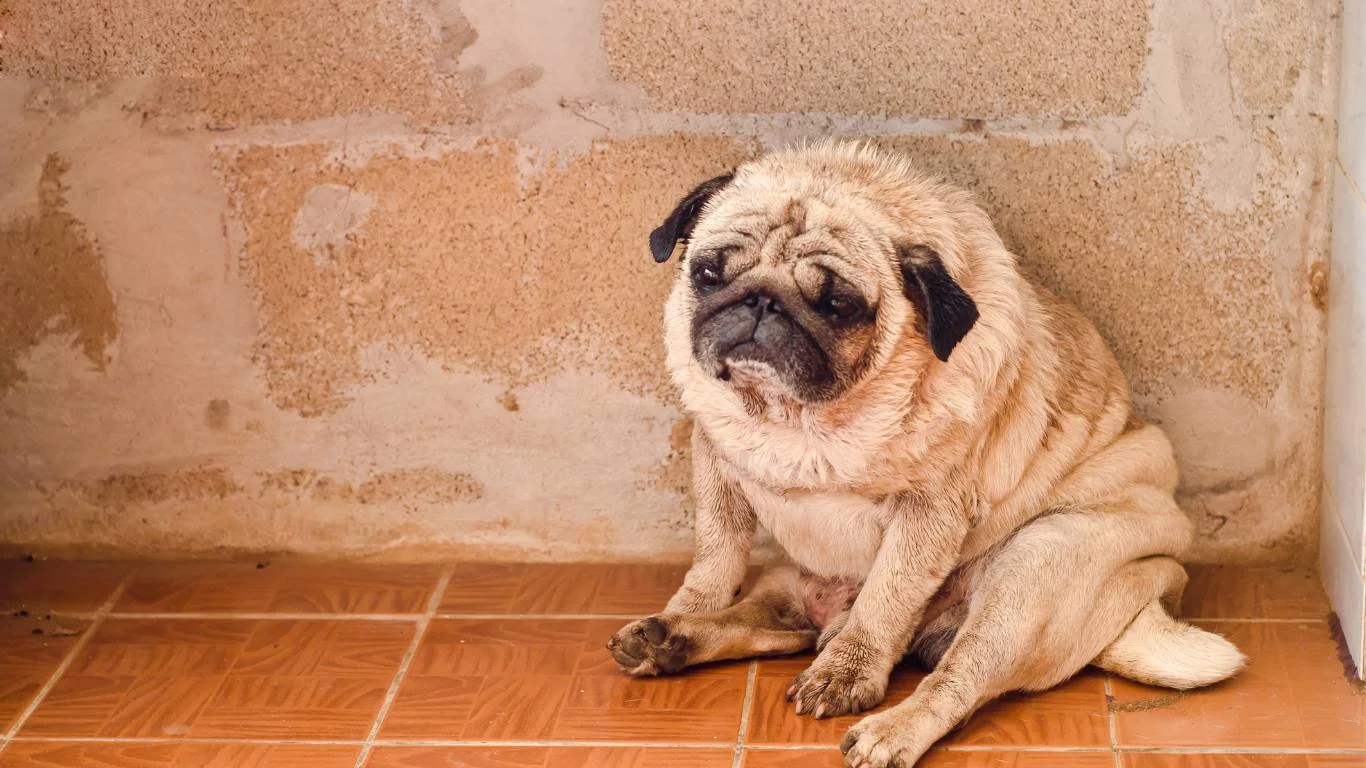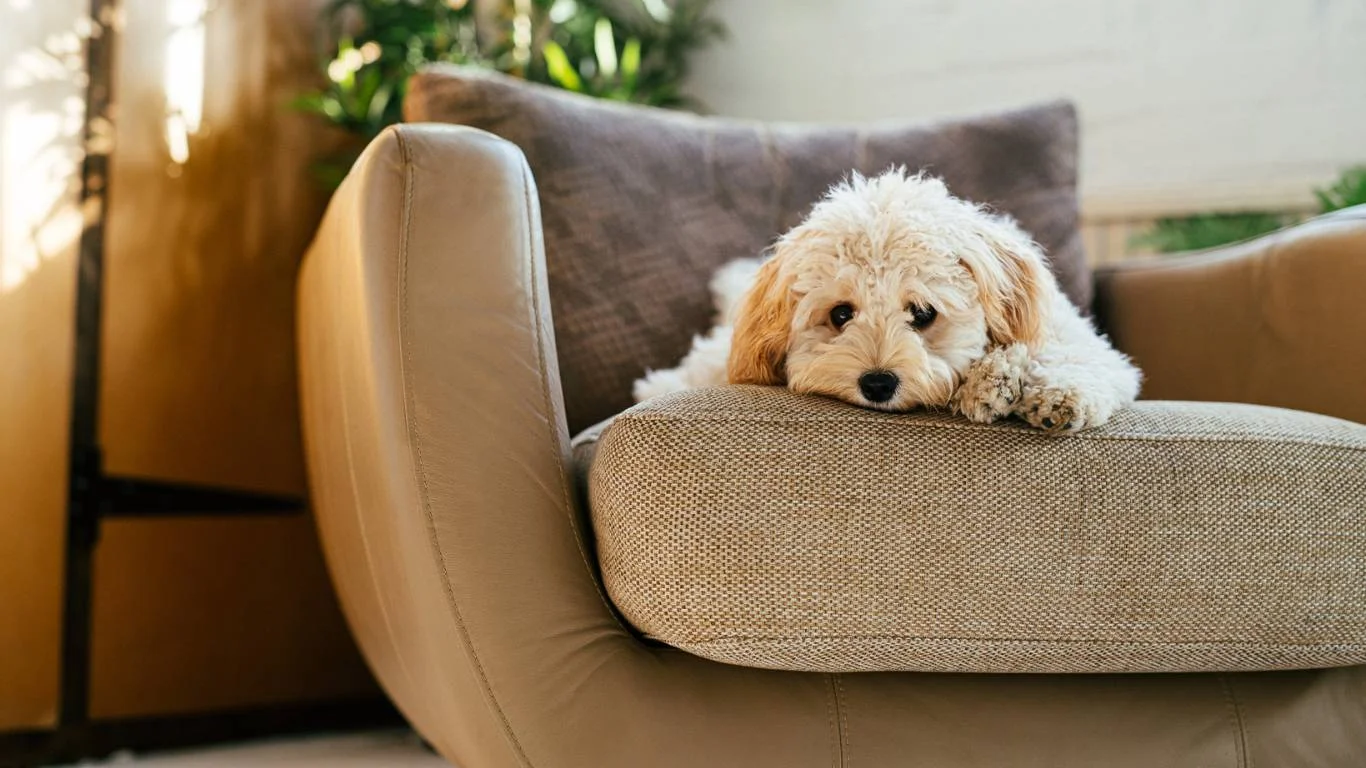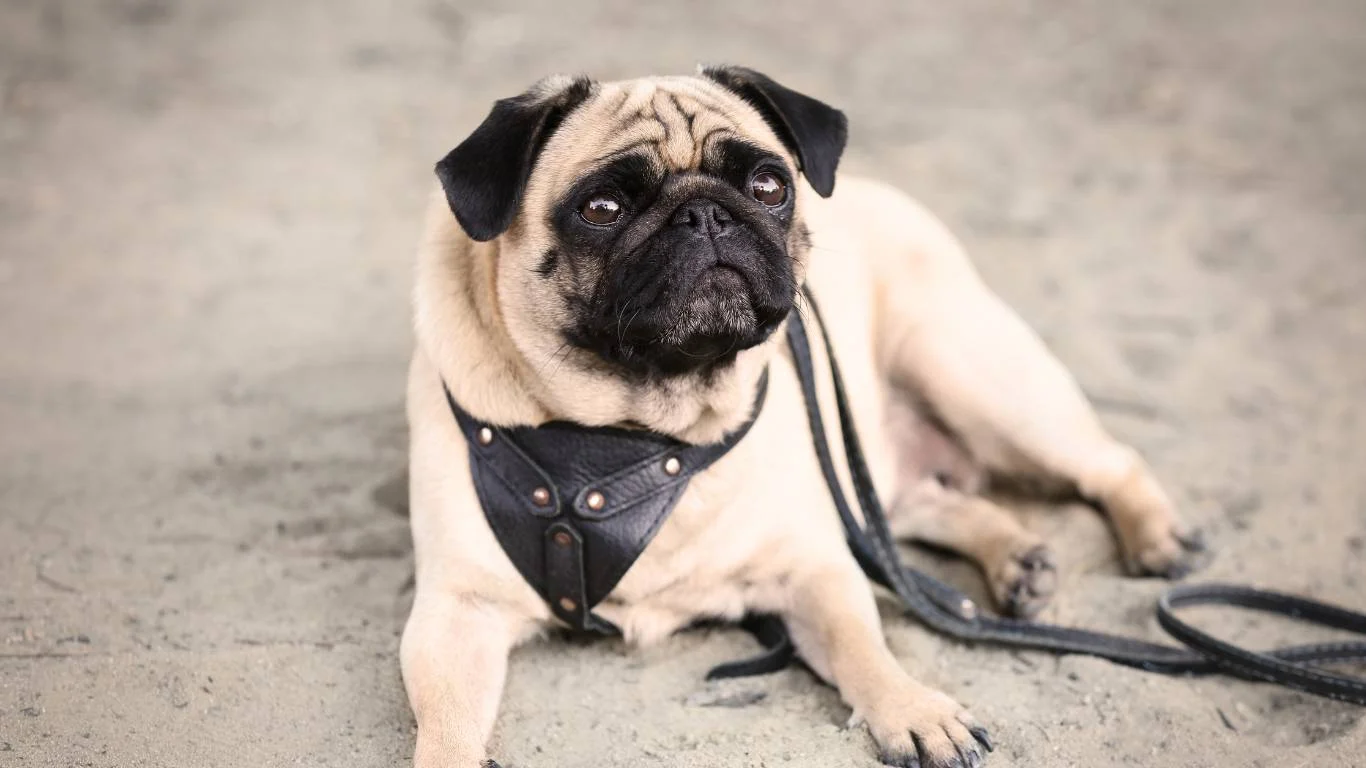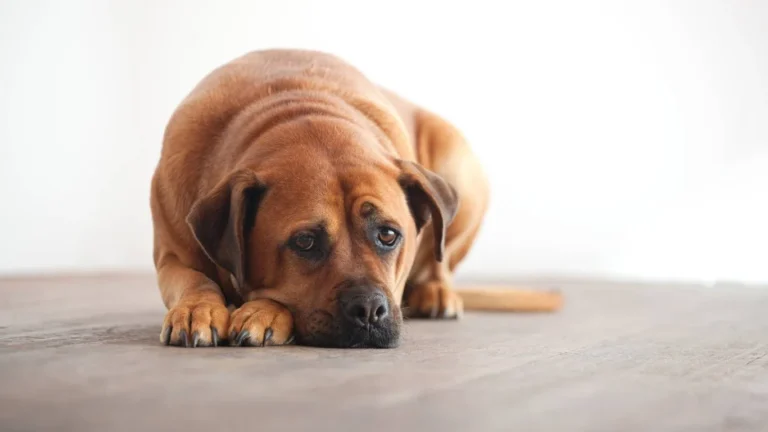Keep Your Dog’s Ears Dry and Healthy: 7 Simple Steps You Can’t Ignore
As a Veterinary Assistant with a focus on nutrition, I’ve learned that dog ear care is often one of the most overlooked aspects of pet health. Many pet owners tend to forget about their dog’s ears until there’s a problem, but keeping your dog’s ears dry and healthy is key to preventing issues like infections, discomfort, and even hearing loss. Whether you’ve got a fluffy-eared pup or a short-haired dog, taking proper care of their ears will go a long way in keeping them happy and healthy. In this article, I’ll share my experience and some practical tips on how to keep a dog’s ears dry and healthy, so you can ensure your dog’s ear health is in tip-top shape.
Why Dog Ear Health Matters
First things first, why is it so important to keep a dog’s ears dry and healthy? Well, dogs’ ears are not like ours. They are more prone to moisture buildup, especially in breeds with floppy ears or those who love to swim. Moisture trapped in the ear canal can create the perfect environment for bacteria and yeast to thrive, leading to painful ear infections. Additionally, if left untreated, these infections can cause hearing loss or more serious health problems for your pup.
Now, every dog is different, and some breeds are more susceptible to ear issues than others. For instance, dogs with long, floppy ears, like Cocker Spaniels or Basset Hounds, are more prone to moisture buildup because their ear flaps trap moisture and warmth inside. On the other hand, dogs with upright ears, such as German Shepherds or Chihuahuas, have less risk of moisture trapping, but they still need ear care to stay healthy.

Signs Your Dog Might Have Ear Issues
Before diving into how to keep your dog’s ears dry and healthy, it’s important to know the signs that something might be wrong. Here are a few red flags that could indicate ear issues:
- Excessive Scratching or Head Shaking: If your dog is constantly scratching their ears or shaking their head, it’s a sign that something’s not right.
- Unpleasant Odor: A foul smell coming from your dog’s ears is often a sign of an infection caused by bacteria or yeast.
- Redness or Swelling: Look inside your dog’s ears. If the skin is red, swollen, or inflamed, your dog may have an infection.
- Discharge or Wax Build-up: Excessive wax or dark, greasy discharge in the ears is another sign that something’s wrong.
- Behavioral Changes: If your dog is more irritable than usual or seems to be in pain, their ears could be the culprit.
If you notice any of these signs, it’s best to consult with your vet as soon as possible. Early detection and treatment can prevent further complications.
How to Keep a Dog’s Ears Dry and Healthy
Now that we know why dog ear health matters and how to spot problems, let’s get into the nitty-gritty of how to actually keep your dog’s ears dry and healthy. The good news is that with a little bit of regular care and attention, you can significantly reduce the risk of ear infections and other issues.
1. Regularly Clean Your Dog’s Ears
One of the most important things you can do to keep your dog’s ears healthy is to clean them regularly. But don’t go overboard—cleaning too often can irritate the ear canal. For most dogs, once a week is usually sufficient, but if your dog is prone to ear infections or has particularly dirty ears, you may need to clean them more often.
Here’s how to clean your dog’s ears properly:
- Gather Supplies: You’ll need a veterinarian-approved ear cleaner, cotton balls, and some patience.
- Position Your Dog: Make sure your dog is calm and comfortable. It’s best to do this when they’re relaxed, such as after a walk or playtime.
- Apply the Ear Cleaner: Gently lift your dog’s ear flap and apply a few drops of ear cleaner into the ear canal. Don’t squirt it directly into the ear, but allow the liquid to flow into the ear.
- Massage the Base of the Ear: Gently massage the base of your dog’s ear to help the cleaner break down any wax or debris inside.
- Wipe Away Excess: Use a cotton ball to wipe away any excess cleaner and debris. Be gentle and avoid pushing anything deep into the ear canal.
Always be sure to use a gentle, dog-safe ear cleaner. Avoid using alcohol, hydrogen peroxide, or other harsh chemicals, as these can irritate your dog’s sensitive ears.

2. Keep Your Dog’s Ears Dry After Baths or Swimming
If your dog loves to swim or enjoys a good bath, you’ll need to be extra vigilant about keeping their ears dry. Moisture in the ears is one of the most common causes of ear infections, so it’s crucial to dry your dog’s ears thoroughly after they get wet.
Here are a few tips:
- Use a Towel: After a bath or swim, gently pat your dog’s ears dry with a clean towel. Avoid rubbing, as this can cause irritation.
- Dry the Inside of the Ear: You can also use a cotton ball or a soft, dry cloth to wipe the inside of your dog’s ears and remove any moisture.
- Consider Using Ear Drying Products: There are ear-drying products available that can help remove excess moisture from your dog’s ears after swimming or bathing. Just make sure to use products that are designed for dogs.
By drying your dog’s ears promptly after getting wet, you can prevent the buildup of moisture that can lead to infections.

3. Watch for Allergies or Skin Issues
Allergies and skin issues are common culprits when it comes to ear problems in dogs. If your dog has food allergies or environmental allergies, these can cause inflammation in the ears, leading to discomfort and infections. Regular visits to the vet and maintaining a good diet are essential for preventing ear issues related to allergies.
Here are some ways to help manage allergies:
- Check for Food Sensitivities: If you notice ear issues in combination with skin rashes, digestive upset, or paw licking, your dog might have a food sensitivity. Consult your vet to determine if a diet change is necessary.
- Keep Your Dog’s Environment Clean: Dust, pollen, and mold can contribute to allergic reactions. Regular cleaning and using air purifiers in your home can help reduce allergens in the environment.
If your dog’s ears are frequently inflamed or infected despite your best efforts, it’s worth having your vet run some tests to determine if allergies are the underlying cause.
4. Trim Excess Hair Around the Ears
If you have a dog with long or dense ear hair, trimming it regularly can help keep their ears clean and dry. Excess hair around the ear canal can trap moisture, dirt, and wax, which makes it harder for air to circulate and increases the risk of infections.
During my time working as a Veterinary Assistant, I’ve seen firsthand how important this simple step can be, especially for breeds like Poodles, Shih Tzus, or Maltese, whose ear hair can get out of control if not managed. Trimming the hair around the ears not only improves airflow but also makes it easier to clean the ear canal and reduces the chances of infections.
How to Trim Your Dog’s Ear Hair
Trimming your dog’s ear hair doesn’t have to be intimidating. Here’s a quick guide on how to do it safely:
- Use the Right Tools: Invest in a pair of small, rounded-tip scissors or an electric clipper designed for pets. Avoid using regular human scissors, as they can be too sharp and dangerous for your dog.
- Be Gentle: Your dog’s ears are sensitive, so make sure to handle them gently. You don’t need to go too deep into the ear canal—just focus on trimming the hair that’s visible around the edges.
- Trim in Small Sections: Work in small sections and trim gradually, ensuring you don’t accidentally nick the delicate skin inside the ear. If your dog isn’t too keen on the process, it’s okay to take breaks.
- Consult Your Vet or Groomer: If you’re unsure or your dog is particularly sensitive, don’t hesitate to consult with a groomer or your vet to have the ear hair trimmed professionally.

5. Use Ear Protection During Outdoor Activities
Another great way to keep your dog’s ears dry and healthy is to protect them during outdoor activities, especially when your dog is exposed to dust, dirt, or water. Whether you’re hiking, swimming, or just out on a walk, it’s important to take measures to avoid exposing your dog’s ears to harmful elements.
I’ve seen some dogs come into the clinic with dirt and debris lodged in their ears after a fun day at the beach, and it’s always a challenge to clean. It’s important to be proactive in these situations. If your dog loves to swim, or if you’re going on a particularly dusty trail, here are a few things you can do:
Protective Options for Outdoor Fun
- Dog Ear Covers: Some companies make ear covers or caps for dogs that help protect their ears from dirt and water while swimming or hiking. These can be especially useful for dogs with floppy ears.
- Clean Their Ears After Outdoor Activities: Always check your dog’s ears after outdoor adventures. If they’ve been swimming or running through muddy terrain, make sure to dry their ears and clean them as necessary.
- Avoid Waterlogged Ears: If your dog loves to swim, make sure to dry their ears immediately afterward, especially if they’ve been in the water for an extended period. Trapped moisture is the perfect breeding ground for bacteria and yeast.
6. Monitor Your Dog’s Diet for Healthy Skin and Coat
As a veterinary assistant, I can tell you that a dog’s diet plays a huge role in their overall health, including ear health. If your dog is prone to ear infections, keeping their diet in check can help improve their skin and coat condition, which in turn can prevent ear problems.
Good nutrition can reduce the risk of skin allergies and inflammation, both of which contribute to ear issues. Look for high-quality dog food that contains essential fatty acids (like omega-3 and omega-6), as these are great for promoting healthy skin. Additionally, avoid food fillers and ingredients that could trigger sensitivities, such as grains or artificial additives.
Foods that Promote Healthy Ears
To give your dog’s ears the best chance of staying healthy, try incorporating these nutrients into their diet:
- Omega-3 Fatty Acids: These essential fats are found in fish oils, flaxseed, and certain types of meat. Omega-3s help reduce inflammation and promote a shiny, healthy coat.
- Probiotics: Some dog foods contain probiotics, which can help balance the gut microbiome and support overall immune health. A strong immune system can help your dog fight off infections, including ear infections.
- Biotin: Known for its role in skin and coat health, biotin (a B vitamin) can also improve the condition of your dog’s ears. Look for foods or supplements that include this important nutrient.
Feeding your dog a balanced, nutrient-rich diet is one of the best ways to support their overall health, including the health of their ears. If you’re unsure about what’s best for your dog, consult with your vet about diet recommendations or consider a dog-specific supplement to enhance skin and ear health.

7. Avoid Over-Cleaning Your Dog’s Ears
While it’s important to clean your dog’s ears regularly, it’s equally important not to overdo it. Over-cleaning can actually irritate the ear canal and lead to dryness or inflammation, which can increase the risk of infections. When cleaning your dog’s ears, focus on removing visible dirt or wax buildup rather than trying to clean every part of the ear every single time.
During my time working as a vet assistant, I’ve seen some pet owners who, out of concern, would clean their dog’s ears every day. While the intent is good, this can cause more harm than help. Ears are delicate, and disrupting the natural oils and balance inside the ear can lead to problems. Stick to the weekly cleaning schedule (or as needed) and consult your vet if you’re unsure.
Also, always use products that are specifically designed for dog ears. Human products, like cotton swabs or harsh cleansers, can damage the ear canal and push dirt further inside, which could be dangerous for your dog.

8. Be Mindful of Seasonal Changes
As we all know, seasons can have a big impact on our pets’ health. Whether it’s the pollen-heavy spring or the cold and dry winter months, the change in weather can affect your dog’s ear health. In my experience as a Veterinary Assistant, I’ve seen many dogs suffer from ear problems during seasonal transitions, especially when environmental allergens like pollen, mold, or dust are in the air.
During allergy season, dogs that are prone to ear infections may experience increased inflammation or itching in their ears. This can lead to problems like yeast infections or bacterial growth, as moisture combined with allergens can create the perfect breeding ground for harmful microorganisms.
Tips to Manage Seasonal Ear Issues
- Allergy Management: If your dog is prone to allergies, talk to your vet about potential treatments or medications to help manage symptoms. This might include antihistamines or other allergy medications that can help reduce itching and inflammation in the ears.
- Keep Your Home Clean: Dust and pollen can exacerbate ear problems, so make sure to clean your home regularly. Consider using a HEPA filter in your home or using air purifiers to help reduce airborne allergens.
- Stay on Top of Ear Care: Be extra vigilant with ear care during seasonal changes. If your dog’s ears seem to be reacting to environmental changes, increase the frequency of ear cleaning, but always be gentle to avoid irritation.
Seasonal changes can be tricky, but staying proactive about your dog’s ear care will help prevent potential issues from developing. Always be observant of any changes in your dog’s behavior, such as more frequent head shaking or scratching, which could be signs of ear discomfort due to allergies.

9. When to Visit the Vet
Even with the best care, there will be times when your dog’s ears need professional attention. Knowing when to visit the vet for your dog’s ear issues can help prevent more severe conditions and ensure their ear health is maintained. If your dog experiences any of the following, it’s a good idea to get them checked out:
- Persistent Odor: If your dog’s ears have a persistent foul smell that doesn’t go away with cleaning, it could indicate an infection that requires medical treatment.
- Severe Pain: If your dog is showing signs of extreme discomfort, such as yelping, biting at their ears, or refusing to let you touch them, it’s time to see the vet.
- Excessive Discharge or Blood: If you notice blood or thick, greenish, or brown discharge coming from your dog’s ears, this could be a sign of a serious infection or injury that needs professional care.
- Unusual Swelling or Growth: Swelling in the ear flap or any unusual lumps could be signs of tumors, polyps, or other more serious conditions.
As a general rule of thumb, any changes in your dog’s ears that don’t improve with basic care should be checked by a vet. Don’t hesitate to make an appointment if you’re concerned about their ear health. Early intervention can save your dog from pain and potential hearing loss.
What to Expect at the Vet’s Office
When you take your dog to the vet for ear issues, the vet will likely perform a thorough examination. This may include:
- Physical Exam: The vet will look inside your dog’s ears with an otoscope to check for redness, swelling, debris, or foreign objects.
- Cytology: A sample of the ear discharge may be taken for testing to determine if there’s a bacterial, yeast, or fungal infection.
- Ear Cleaning: The vet may clean your dog’s ears more thoroughly than you can at home, especially if there’s a lot of wax or debris buildup.
- Medication: If an infection is found, your vet may prescribe topical or oral medications to treat the condition.
Though it can be stressful to visit the vet, rest assured that they have the tools and expertise to ensure your dog’s ears are properly treated. In most cases, your dog will start feeling better after just a few treatments!

10. Prevention is Key: Keeping Your Dog’s Ears Healthy Long-Term
Taking preventative steps is always the best way to ensure your dog’s ears stay healthy for the long haul. If you’re proactive about ear care, you can significantly reduce the chances of ear infections and other ear-related issues. Here are some key preventative measures to keep your dog’s ears in optimal condition:
- Routine Check-ups: Regular veterinary check-ups are essential for spotting early signs of ear issues and addressing them before they become bigger problems.
- Regular Ear Cleaning: As we’ve discussed, regular ear cleaning (once a week or as needed) is crucial for preventing infections, but be careful not to over-clean.
- Maintain a Healthy Coat: Regular grooming helps ensure that your dog’s ear hair doesn’t become too long or matted, which can lead to moisture buildup.
- Proper Hygiene After Baths and Swimming: Always dry your dog’s ears thoroughly after water-related activities to prevent moisture from accumulating.
By taking these steps, you’ll be able to keep your dog’s ears dry, clean, and healthy for years to come, reducing the risk of infections and discomfort. As a pet parent, you’re your dog’s first line of defense, so maintaining good ear health will help ensure your dog stays happy and active!
References:
Disclaimer: The information provided in this article is for educational purposes only and should not replace professional veterinary advice. Always consult with your veterinarian if you have concerns about your dog’s ear health.






